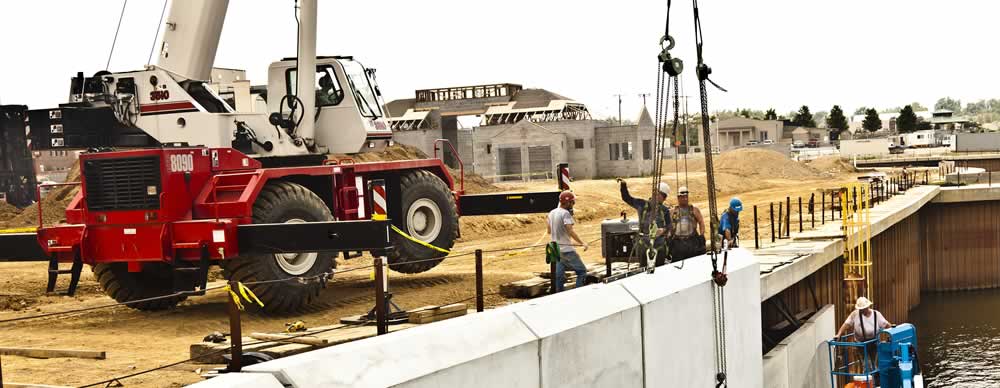Chapter Gallery of Images
What's Done, What's Next: A Civic Pact
Chapter Two:
Underlying Big Decisions,An Owensboro Operating System That Works, Mostly
by Keith Schneider
August 19, 2011
Leaning On The Mayor
In April, Kuegel and several EDC board members secured a meeting with the mayor to talk about these sorts of questions, and describe their fear that moving from Gateway Planning’s $20 million, 80,000 square-foot project to Trahan’s 145,000 square-foot, $32 million concept would prompt a backlash when the numbers were made public.
In interviews, Kuegel and others in attendance said the mayor dismissed their concerns. Kuegel recalled that Payne calmly eyed the small group and said “’Hold on!’ We’re not talking about the Gateway plan.”
It was the last time the EDC met with the mayor, said Kuegel. “We’d gotten as far as putting another meeting on his schedule just a few weeks ago with the EDC and the Chamber of Commerce,” said Kuegel in mid-July. “But he called that morning and cancelled.”
Meanwhile, the Greater Owensboro Chamber of Commerce also was putting its concerns in front of Payne. The organization’s leadership felt its credibility and the city’s prospects were on the line with the decision on the convention center’s size and cost. The Chamber’s support for the 2009 tax increase was essential to the measure’s passage, a rare act by any chamber of commerce, few of which endorse tax increases. The Chamber decision, said Executive Director Wassmer, “cost us a handful of members.”
On April 25, 2011, Wassmer and a group of the Chamber’s executive committee held a mid-morning meeting with the mayor and Bill Parrish, the city administrator. Two Chamber board members who had served on statewide association boards, and had participated in decisions on where to hold conferences, told the mayor they would not recommend Owensboro for an event, said Wassmer in an email message. Why? Because the city did not have enough hotel rooms downtown.
“It’s fair to say those educated opinions were dismissed by Payne and Parrish,” said Wassmer. He added: “Conference attendees like to park their car when they arrive and have all events within easy walking distance. Any conference with more than 150 attendees will not allow for that with the current hotel configuration.”
In an interview, Payne describes why he’s driving the project so hard. He walks to a corner of his City Hall office and points to a map of metropolitan Owensboro. There are more than a dozen sticky notes, like yellow butterfly wings, fixed to the map. Each designates the title, location, and cost of a local construction project either recently completed, underway, or planned. The total value of the projects is over $1 billion.
“We talked here for years and years, got really good about doing studies,” Payne says. “I came in absolutely determined to get something done, something important enough to be worth being mayor. We’re starting to have young people move back after they’ve spent time in other places. When this convention center is built this will be the most beautiful riverfront on the Ohio.”
It’s Not Personal, It’s Policy
“This is not a power struggle,” Kuegel insists. “If we just sit back and go along with what’s happening, and the convention center cost gets to $50 million, the next group of leaders has to raise taxes. And that becomes a real problem for the city.”
Kuegel and the other people raising concerns puzzled over the next step. The quiet diplomacy to convince Payne to justify the center’s growing size and cost didn’t work. But business leaders were wary of taking their concerns public. Such a move might be interpreted as an act of condemnation that could put the convention center in political jeopardy, a consequence none wanted.
“The real problem is how negative you’d have to be to really pull it back,” said Kuegel. “We don’t want to be negative.”
Al Mattingly, the Daviess County Judge Executive and a member of the steering committee, is nervous for the same reason. A former city commissioner who narrowly lost mayoral races in 2004 and 2008, Mattingly is a pragmatic conservative who worries about the mood of his constituents. The 2009 vote to increase the insurance tax aggravated people.
“As the architectural rendering and the financing becomes visible, it will reignite controversy,” he said in an interview. “Grumpy will come out.”
“Even if it’s the best thing, the right thing to do,” Mattingly added, “the process isn’t good and it feeds discontent that has long festered. But the community has now placed its bet and cannot really take it back. We have to hope for the best.”

